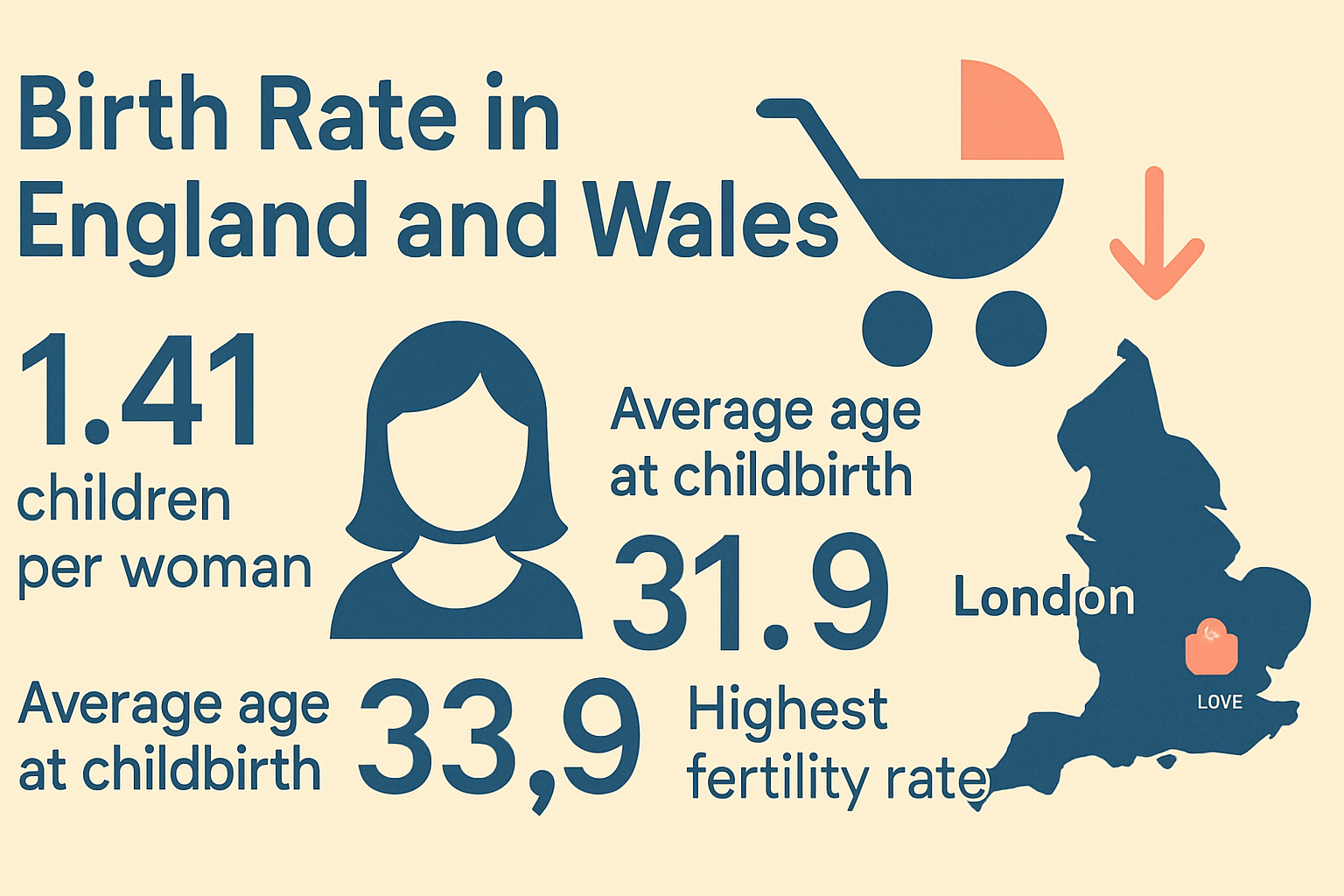The birth rate in England and Wales has fallen to its lowest level on record, highlighting deepening demographic challenges as more people delay starting families or opt for fewer children.
Record Low Fertility
According to figures released by the Office for National Statistics (ONS), the total fertility rate dropped to 1.41 children per woman in 2024, down from 1.42 in 2023. This marks the third consecutive year of record lows and the lowest figure since records began almost 90 years ago.
In Scotland, separate data published earlier this week showed births had also declined sharply, reaching the lowest number in nearly 170 years. The Scottish fertility rate stood at just 1.25 children per woman, also the lowest on record.
These figures remain well below the replacement level of 2.1 children per woman required to sustain population levels in developed countries without migration.
Delayed Parenthood
The ONS report noted that the average age of mothers at childbirth rose to 31 years in 2024, compared with 30.9 in 2023 and 29 in 2004. Fathers’ average age also increased slightly, reaching 33.9 years.
Experts say delayed parenthood is a key driver of the declining birth rate. Professor Melinda Mills of Oxford University explained that factors such as high housing and childcare costs, job insecurity, gender inequality, and difficulties balancing work and family life are pushing people to postpone having children. The lack of a stable partner has also been cited as a significant barrier.
Economic Consequences
Demographers warn that persistently low birth rates could reduce the size of the UK’s working-age population in the coming decades, with significant implications for public finances and economic growth. The Office for Budget Responsibility has projected that higher spending on pensions and healthcare for an ageing population could drive public debt above 270% of GDP by the 2070s, compared with 96% today.
Although the total number of births in England and Wales rose slightly in 2024 to 594,677, up 0.6% from 2023, population growth offset the increase, causing the fertility rate to decline further.
Regional and Demographic Variations
The largest declines were observed among parents aged 25 to 29, while small increases were recorded among mothers aged 30 to 34 and older fathers. Interestingly, London and the West Midlands bucked the national trend, registering their first fertility rate increases since 2021.
London also recorded the latest average age of motherhood at 32.5 years, more than a year older than the second-highest regional average in the South East.
The Role of Immigration
According to Professor Jonathan Portes of King’s College London, the slight slowdown in the decline of the birth rate is partly linked to immigration. While the number of children born to UK-born mothers has continued to fall, births to immigrant mothers have helped sustain overall numbers. He noted that the data underscores the intersection of demographic change and immigration policy in shaping the UK’s future population.








